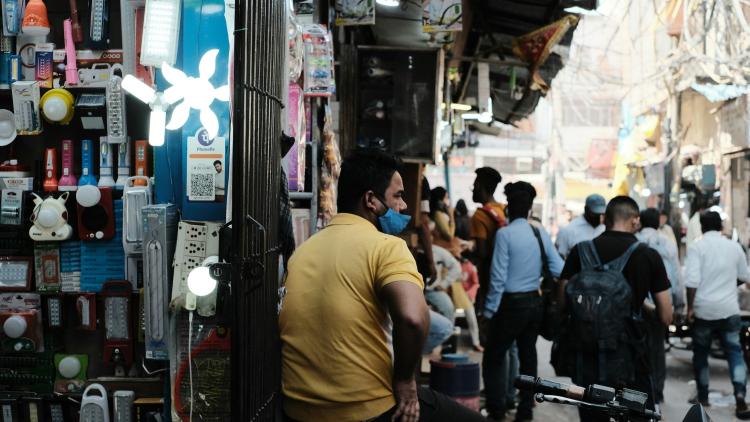Unveiling a hidden crisis: The global scale of social exclusion


New research estimates over 2.3 billion people face social exclusion. Dr Miguel Niño-Zarazúa explores its causes, regional disparities, and the need for targeted policies.
Absolute polarisation is on the rise in many societies. Economic disparities, identity politics, and cultural divides contribute to a polarised environment where excluded groups become further marginalised. Social exclusion is a pervasive issue that affects billions of individuals worldwide, yet it often goes unaddressed due to the lack of comprehensive data and systematic analysis.
In a recent article in PLOS One with my colleagues Jose Cuesta from the World Bank and Borja López-Noval from the University of Leon, we provide the first global and regional estimates of populations at risk of social exclusion. This groundbreaking study offers a detailed exploration of the multidimensional and dynamic nature of social exclusion, emphasising its relative aspects and the profound impact it has on individuals' ability to live a dignified life.
What is social exclusion?
Social exclusion extends beyond the traditional boundaries of poverty, encompassing a wide array of factors that prevent individuals from fully participating in society. It involves a lack of access to resources, rights, goods, and services, and manifests in various forms, such as stigmatization, segregation, and systemic discrimination.
It involves a lack of access to resources, rights, goods, and services, and manifests in various forms, such as stigmatization, segregation, and systemic discrimination.
While there is no consensus on the dimensions that constitute the most acute forms of exclusion, there is agreement on its multidimensional and dynamic nature and the relational processes by which groups are excluded. This relational feature is not immediately evident in the case of poverty, as the Economics Nobel laureate, Amartya Sen, has pointed out.
What contributes to social exclusion?
First, people may face exclusion because their identity diverges from established norms. These identities may reflect gender, age, race, ethnicity, caste, or religious affiliations. While not all individuals within these groups are excluded, they are at higher risk in contexts where discriminatory norms prevail.
Second, adverse circumstances such as forced displacement due to conflict or poverty, or being a victim of gender-based violence, significantly increase the risk of exclusion, especially in environments with discriminatory laws and institutions.
Third, having a disadvantaged socioeconomic position due to low educational achievements, unemployment, or poverty can limit access to labour markets, credit, or political participation, further entrenching social exclusion.
Global estimates of social exclusion
Our study reveals a staggering number of individuals experiencing social exclusion. Approximately between 2.33 and 2.43 billion people—roughly 32 percent of the global population—are at risk of social exclusion. This phenomenon is characterised by the systematic denial of rights, resources, and opportunities. The size of excluded populations exceeds those in monetary and multidimensional poverty.
Women, children, and poor men are the primary groups at risk of exclusion, representing 85% to 90% of excluded populations. Indeed, our study underscores the role of gender in social exclusion. Women and girls are disproportionately affected by social exclusion, facing significant additional barriers due to gender-based violence, unequal access to education and healthcare, and limited participation in decision-making processes.
Other vulnerable groups include members of the LGBTI community, indigenous people, Afro-descendants, and religious minorities. These groups face heightened exclusion because of their identities, circumstances and socioeconomic disadvantages
Regional disparities
The incidence of social exclusion varies significantly across different regions. In sub-Saharan Africa, roughly half of its population is at risk of exclusion. Its rate doubles that of East Asia and the Pacific (26%), and well exceeds that of MENA (28%), South Asia (34%), and Latin America (29%).
South Asia and East Asia, due to their large populations, have the highest absolute numbers of excluded populations. India and China alone account for approximately 840 million individuals at risk of exclusion, highlighting the substantial challenge these nations face in fostering inclusive societies. It is worth noting that the share of excluded populations in North America, that is, the US and Canada, exceeds that of Europe and Central Asia.
The prevalence of gender-based violence significantly affects women in South Asia and East Asia, while indigenous populations in Latin America and the Caribbean face systemic exclusion. Similarly, Afro-descendants in North America and Latin America, and religious minorities in South Asia, East Asia, and Europe, experience significant levels of exclusion, underscoring the complex interplay of identity and exclusion.
Policy Implications
The extensive scale of social exclusion necessitates a multifaceted policy approach. First, there is a critical need to broaden access to labour, financial, and land markets and to improve the quality and coverage of basic services. While poverty-targeted interventions like cash transfers can alleviate extreme poverty, they are insufficient to address the deeper roots of exclusion.
Addressing social exclusion effectively requires sustained and diverse interventions tailored to specific groups and contexts.
Second, addressing social exclusion effectively requires sustained and diverse interventions tailored to specific groups and contexts. Drivers of exclusion, such aEs discriminatory laws and social norms, vary widely and necessitate targeted responses. For example, policies aimed at reducing gender-based violence or supporting forcibly displaced populations must be distinct from those addressing long-term unemployment.
Finally, rigorous methodologies are essential for monitoring and addressing social exclusion. The challenges in defining and measuring exclusion do not make it unmanageable but rather highlight the need for concerted efforts to implement comprehensive data collection and monitoring systems. This includes harmonising household surveys, expanding census questions, and improving sampling frames to capture representative data on vulnerable populations.
Header image credit: Jon Tyson via Unsplash.
About the author
Dr Miguel Niño-Zarazúa is a Senior Lecturer in Development Economics at SOAS University of London and a Non-Resident Senior Research Fellow at the United Nations University-World Institute for Development Economics Research.



